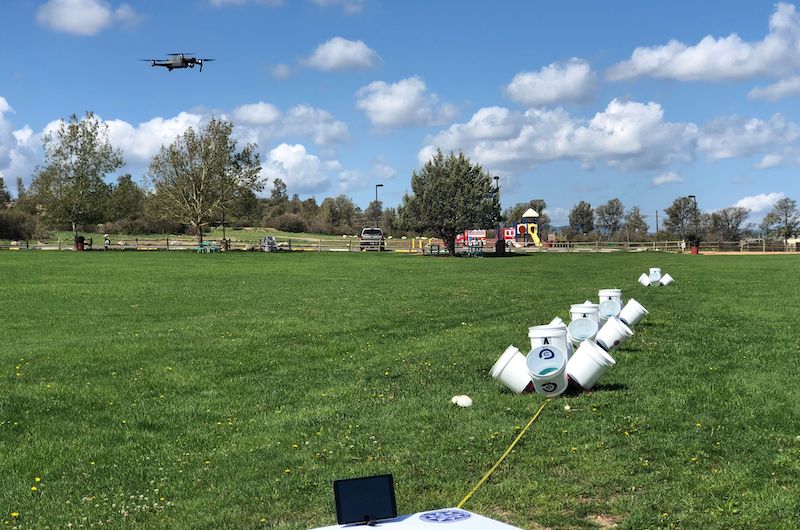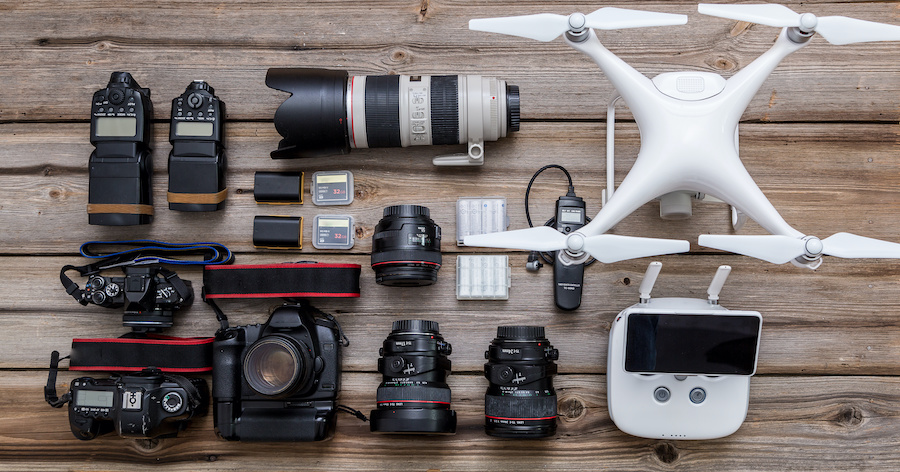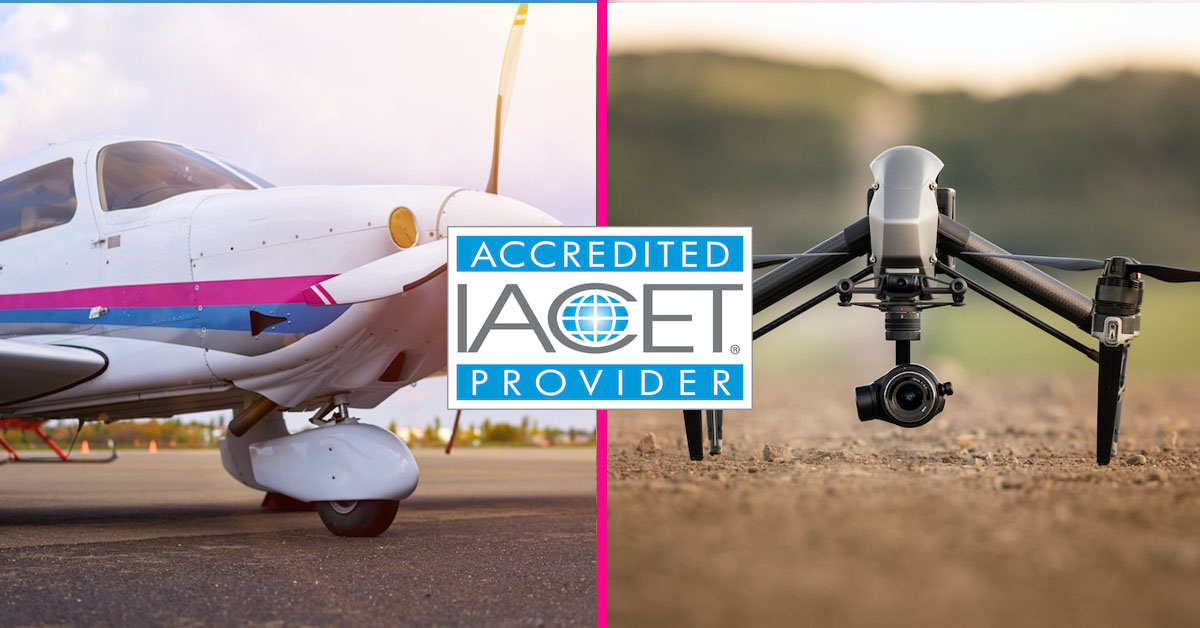-
DJI Drones
- DJI Mini SE
- DJI Mini 2
- DJI Mini 3 Pro
- DJI Air 2S
- DJI Mavic 2 Pro
- DJI Mavic 3
- DJI Phantom 4 Pro
- DJI Inspire 2
- DJI Mavic 2 Enterprise Advanced
- DJI Matrice 30 / Matrice 30 T
-
Autel Drones
- Autel Nano
- Autel Lite
- Autel Evo II
-
Parrot Drones
- Parrot Anafi Thermal
- Parrot Anafi AI
- Parrot Anafi USA
-
Drones for fun
- Hubsan Zino Mini SE
- BetaFPV Cetus Pro
- Pilot Institute Budget FPV Build
-
Niche drones
- Wingtra One
- BRINC Lemur
- Paladin Knighthawk
- Watts Innovations
-
Final thoughts
We have no shortage of excellent drones in 2022. However, it can also make the choice of buying the right one for you and your needs a bit overwhelming. Are you looking for something that you can fly for fun or something that can help in your business or profession? Do you need something with special capabilities like thermal imaging?
With about a dozen things to consider, narrowing down the list to some of the best drones of 2022 should help make the decision process easier. Here are some of our best recommendations and the specific use cases where they work best.
DJI Drones
Starting this list off with the most popular drone brand globally is just the simplest way to go about it. All DJI drones mentioned here have a few functions that are common to them:
- Return to Home (RTH)
- Geofencing
- OcuSync transmission technology
- Smart controllers
- GPS Hold
By far, the most controversial feature of DJI drones is their forced geofencing feature. This places a restriction on flying DJI drones in pre-identified GEO Zones, possibly grounding your drone unless you can get an unlock approval from DJI. While the intention is good, this creates extra work on the part of the drone pilot, especially since the DJI unlock process is independent of the airspace approval procedure of the FAA.
If you’re getting a DJI drone, then the geofencing feature is just something that you will have to live with. Whether this is a deal-breaker or not entirely depends on you. With that out of the way, let’s look at our recommendations.
DJI Mini SE
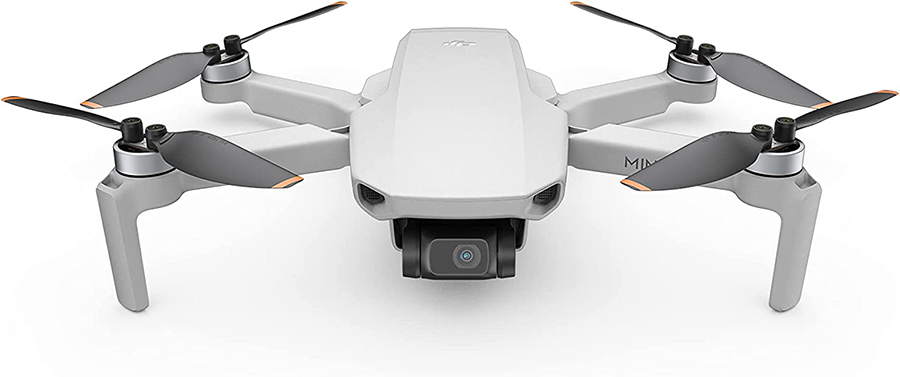
The Mini SE is the entry-level drone in the DJI Mini product line. The main characteristic of these drones is that they all weigh below 250 grams. This is the weight threshold that the FAA has set for drone registration for those who only fly their drones recreationally.
The Mini SE costs approximately $299 and is one of the cheapest drones in this buying guide. The Mini SE has a camera with a 1/2.3” image sensor that can record 12 MP stills and 2.7K videos and is supported by a 3-axis mechanical gimbal. It is rated for a maximum of 30 minutes of flight time.
The Mini SE is an excellent drone that overperforms in the $200 to $300 price range. Its biggest drawbacks are that it records videos only at 2.7K resolution and cannot take photos in RAW mode. Professional users may find these to be serious deficiencies.
DJI Mini 2
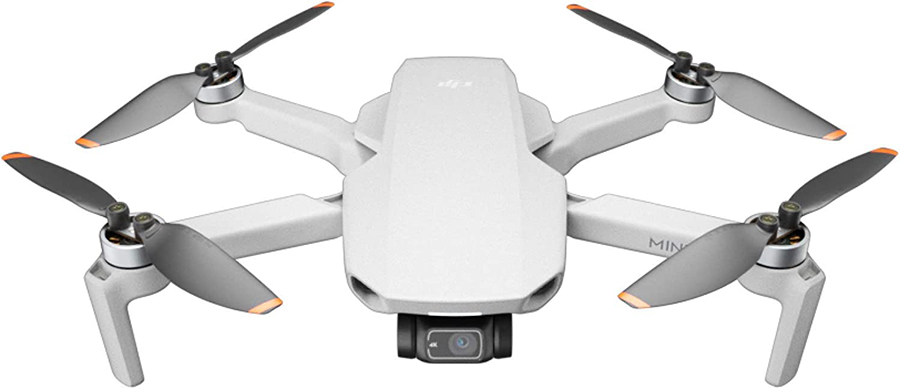
You can consider the Mini 2 as an upgraded version of the Mini SE. Although it has the same image sensor size as the Mini SE, the Mini 2 can record videos at 4K resolution and 30 fps. It also comes with the standard DJI QuickShot modes such as the Dronie, Helix, Rocket, and Boomerang.
The Mini 2 costs about $450, making it significantly more expensive than the Mini SE. For the price difference, it offers a lot more photography options. The drone has held up well through the years and is notably one of the best sub-$500 drones.
DJI Mini 3 Pro
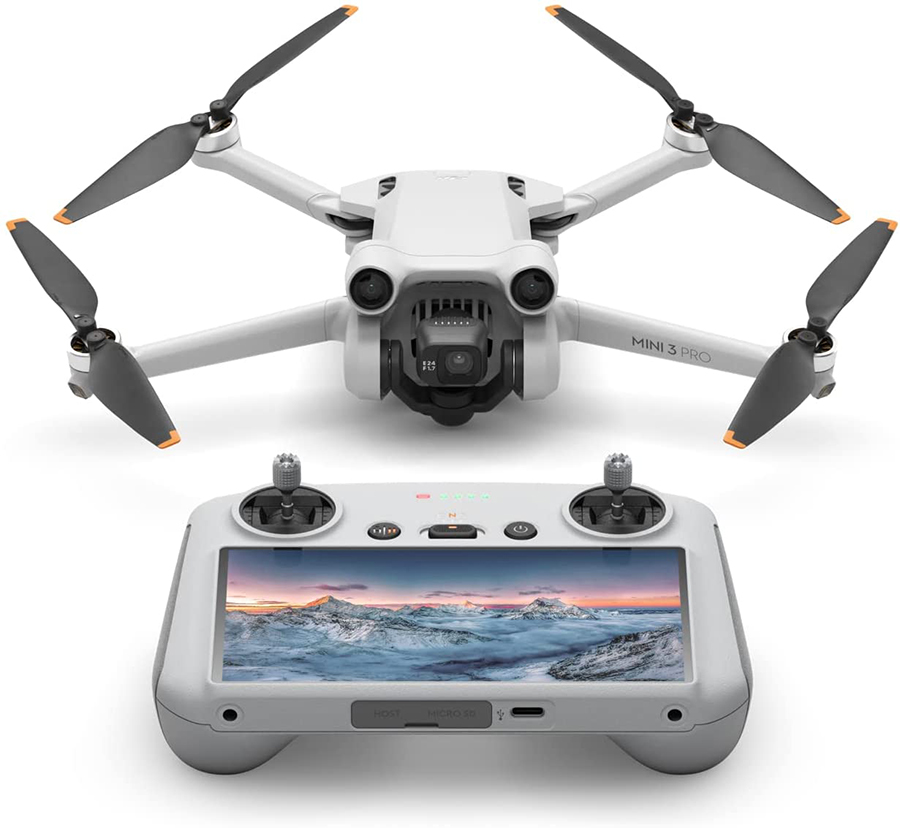
The DJI Mini 3 Pro is the Mini drone that truly lives up to the “Pro” moniker. It has a large 1/1.3” image sensor, can record videos at 4K resolution and 60 fps, has slow-motion capabilities, and has a larger gimbal movement range.
The Mini 3 Pro is also the first Mini drone that comes with an obstacle avoidance system and subject tracking capabilities. This puts it at a much higher tier compared to the Mini 2 and the Mini SE and makes it capable enough for professional use. At about $669, the Mini 3 Pro is more expensive but also delivers significantly more value.
DJI Air 2S
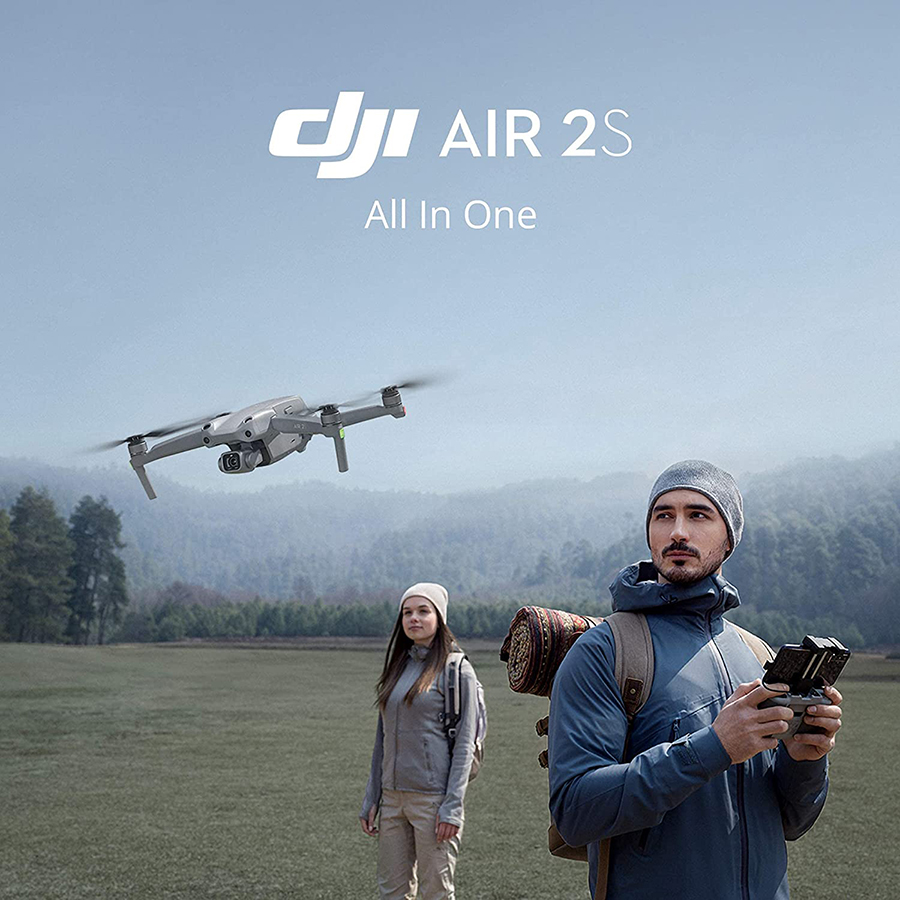
Moving on to the larger DJI drones, the Air 2S is the current flagship DJI Drone under the Air line. It costs about $999, has a 1-inch CMOS sensor, and can record videos at 5.4K at 30 fps. All the camera modes, obstacle avoidance systems (the Air2s has a slightly better version), and subject tracking features that we highlighted in the Mini 3 Pro can also be found in the Air 2S.
The bigger hull of the Air 2S also gives it an edge in terms of flight performance with higher maximum speeds. Professional drone photographers and filmmakers can make the most out of the Air 2S because of its large image sensor and more varied color profiles.
In terms of value for money, the Air 2S is hard to beat.
DJI Mavic 2 Pro
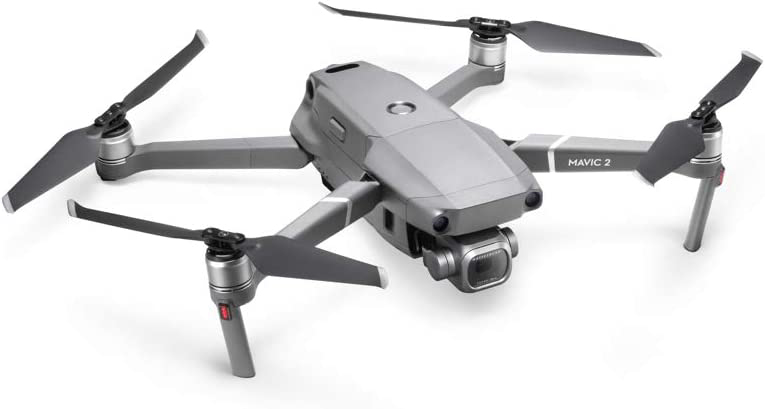
The Mavic 2 Pro is quite old, but it remains a viable drone for professional use. It has a 1-inch CMOS image sensor and can record 4K resolution videos, albeit only at 30 fps. It comes with all the usual flight modes, subject tracking features, and the now-abandoned Tap to Fly mode.
The Mavic 2 Pro is also one of the first DJI drones to come with a 4-way obstacle avoidance system augmented with the APAS feature. Although this is an early implementation of this technology, it is still a nice feature to go hand in hand with the drone’s automatic flight modes.
A brand-new Mavic 2 Pro retails for about $1600. The nice thing about going for an older model is that there are lots of used units out there that you can buy for much cheaper.
DJI Mavic 3
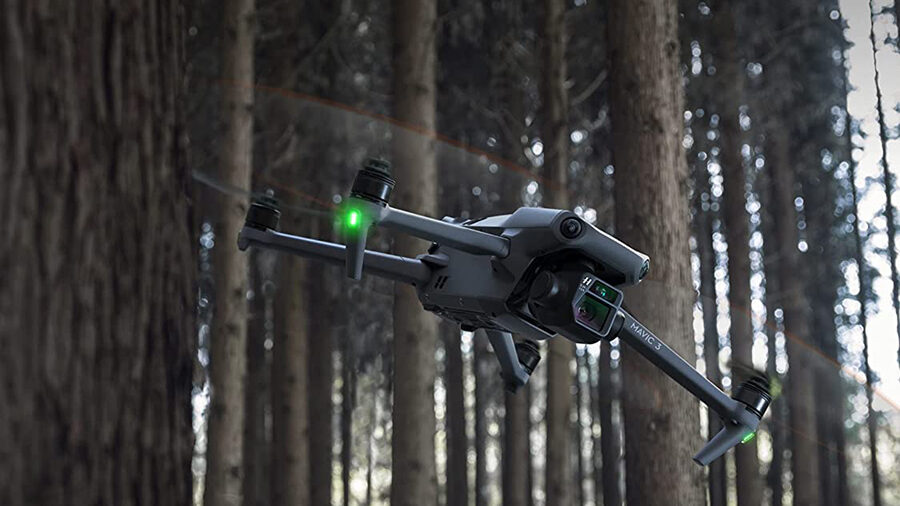
The Mavic 3 is currently the top-of-the-line drone in the DJI Mavic line. This drone has a 20 MP Micro Four Thirds (MFT) image sensor in the main camera and a second lens with a half-inch sensor. While the main camera can capture 5.1K resolution at 50 fps and 4K resolution at 120 fps, the second camera offers up to 7x optical zoom and 28x digital zoom. This is easily one of the most powerful camera drones available today.
On top of the camera capabilities, the Mavic 3 has all the standard camera and flight modes and has an omnidirectional avoidance system with the latest version of APAS.
The Mavic 3 comes in two versions. The regular Mavic 3 retails at about $2050 and is perfect for those who want to start drone-based photography or cinematography businesses. There is also a Cine version that costs around $5000. For this huge price jump, the Mavic 3 Cine can record Pro-Res videos and can store them directly onto a 1TB SSD. This is certainly a high-end drone and is designed for high-level professional users.
DJI Phantom 4 Pro
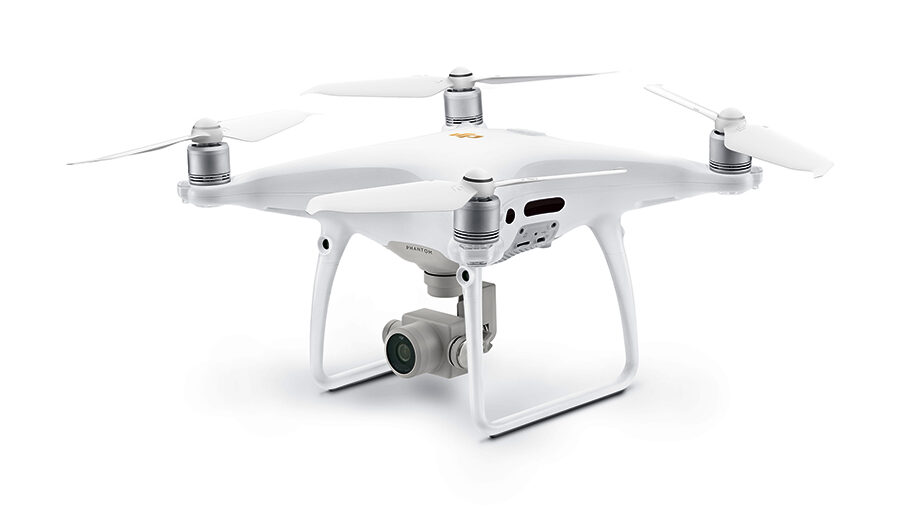
The Phantom 4 Pro is a very old drone from DJI but it’s a testament to its quality that this drone continues to be a workhorse in many industries. Although it’s out of production, you should still be able to see a few Phantom 4 Pro V2.0 drones being sold nowadays.
The Phantom 4 Pro has a very distinct look and is easily one of the more recognizable drones ever made. It has a 30-minute flight time, and a 1-inch 20 MP CMOS image sensor, and can record videos at 4K resolution and 60 fps. The drone has obstacle avoidance sensors in four directions.
This is one of the few drones that come with a mechanical shutter. This has made the Phantom 4 Pro the drone of choice for aerial photogrammetry. Moreover, DJI has released two advanced versions of the Phantom 4 Pro – the Phantom 4 RTK for more precise mapping surveys, and the Phantom 4 Multispectral for near-IR surveys. These two are much more expensive and serve specialized functions.
With these advanced features, the Phantom 4 Pro is likely interesting only to high-level professionals or enterprise users.
DJI Inspire 2
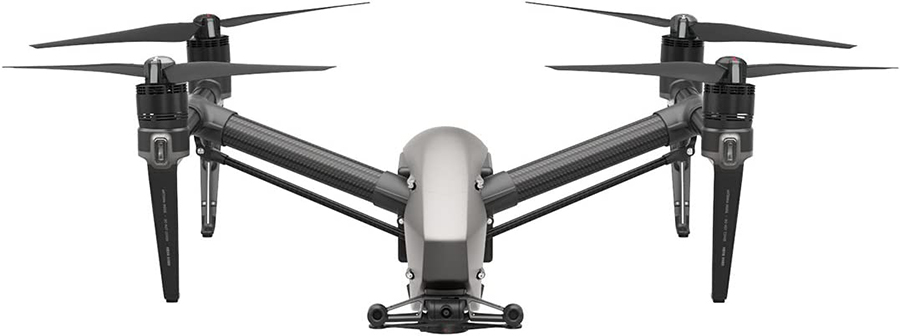
The Inspire 2 is another of the legacy DJI drones that have stood the test of time. This large and visually distinct drone has a flight time that ranges from 23 to 27 minutes, depending on the payload. On the topic of payload, the Inspire 2 has several payload options from the Zenmuse series. This makes the Inspire 2 one of the more versatile drones that can be used for photography just as well as in photogrammetry and thermal imaging.
Even in 2022, the Inspire 2 is a workhorse of many industries and is still widely used in lots of high-end applications. You can probably find a used Inspire 2 for a good price, but you will still need about $4000 to buy one, not including the cost of the accessories.
While there are rumors of the Inspire 3 coming out soon, it’s almost certainly going to be very expensive. Until then, the Inspire 2 is the drone that you use to show your clients that you mean business.
DJI Mavic 2 Enterprise Advanced
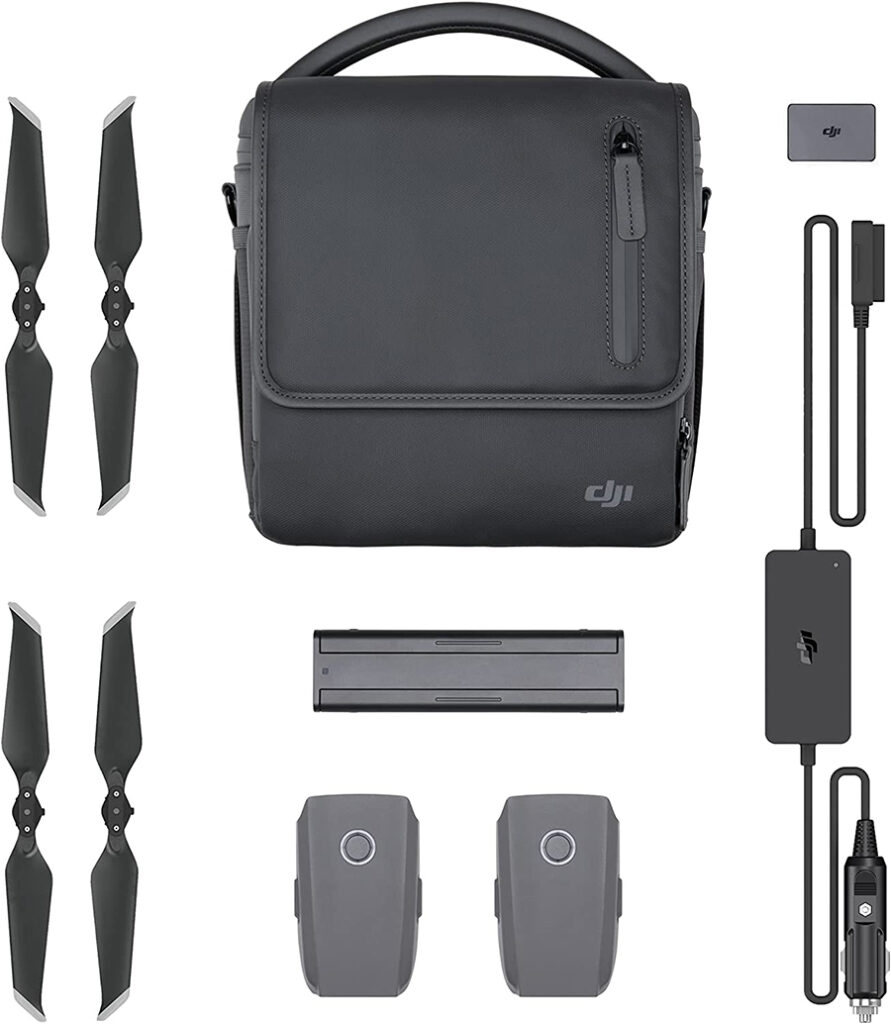
Enterprise users may consider the Enterprise Advanced version of the Mavic 3 drones. This drone starts at around $7000 and has the unique feature of interchangeable payloads in a foldable form factor.
The Mavic 2 Enterprise has 31 minutes of flight time, a half-inch 48MP CMOS image sensor that can record 4K videos at 30 fps, and a built-in LWIR sensor for thermal imaging. You then have the option of augmenting the drone with payload options including speakers, spotlights, and beacons. With this in mind, the M2E seems well-suited for public safety and search and rescue situations.
The camera modes of the M2E have been stripped down but it still retains the obstacle avoidance systems. Again, this is a drone that is designed for specialized use.
DJI Matrice 30 / Matrice 30 T
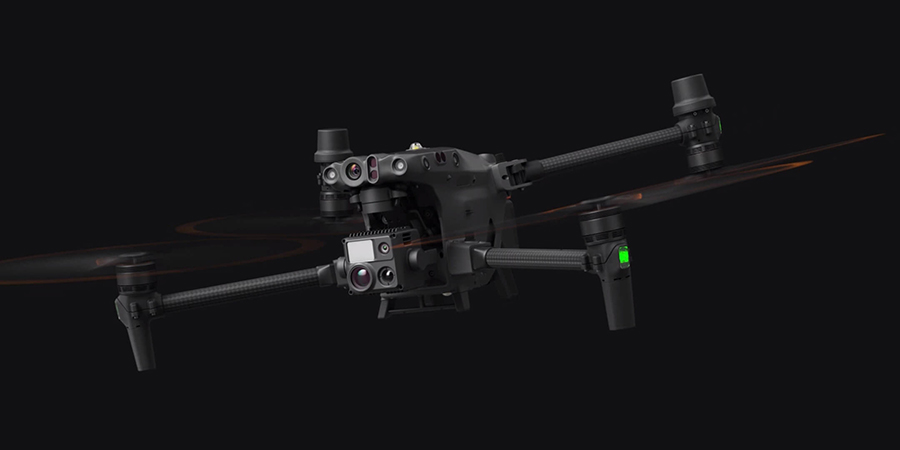
On the extreme high end are the Matrice 30 and Matrice 30 T drones. These are the ultimate drones for public safety use and will cost you upwards of $10,000. These are designed for enterprise users.
The Matrice 30 has 41 minutes of flight time and has a ½-inch 12MP Zoom lens and another ½-inch 12 MP Wide lens, both of which can record 4K videos at 30 fps. The Matrice 30 T version comes with a thermal sensor. The Matrice drone has obstacle avoidance technology, is capable of programmed flight via waypoints, and has a higher-resolution FPV camera compared to other DJI drones.
Autel Drones
Autel is considered the second-largest drone manufacturer in the world, although the figure is currently still much smaller compared to DJI. Still, many people consider Autel to be the up-and-coming competitor. The characteristic orange hue of the Autel drones is also a nice touch and makes them easy to pick out.
Many drone pilots have transitioned to Autel mainly because of one thing – the lack of geofencing restrictions. Autel drones will not be forcibly grounded even in controlled airspace. This is a contentious topic that has become a regular discussion point in many drone communities.
This does not take away the excellence of the Autel drones. Autel is excellent even without having to resort to a comparison with DJI. Here are some of the best Autel drones that are available in 2022:
Autel Nano
The Nano, which comes in the standard Nano and Nano Plus version, is Autel’s answer to the DJI Mini line. These drones weigh less than 250 grams and are great entry-level drones that do not require FAA registration if used for recreational flight.
The Autel Nano retails at about $900, while the Plus version costs about $950 with a few extra accessories. Both drones can record 4K videos at 30 fps and 1080p videos at 60 fps. The Nano has ½-inch 48 MP image sensors while the Nano Plus has a slightly larger 1/1.28” 50 MP image sensor. The Nano drones have all the usual automatic camera and flight modes, a three-directional obstacle avoidance system, and subject-tracking capabilities.
At its price range, the Nano most closely competes with the DJI Mini 3 as a slightly higher-end entry-level drone. It’s a bit expensive but remains somewhat accessible to beginners. Compared to less expensive micro-drones, the Autel Nano is meant to last longer before its owner will feel the need to upgrade.
Autel Lite
The Autel Lite is the next tier of Autel drones. It also comes in a standard Lite version (about $1250) and a Lite Plus version (about $1550). The Autel Lite has a very impressive flight time of up to 40 minutes, a 1/1.28” image sensor, can shoot 4K videos at 60 fps, and a variable aperture from f/2.8 to f/11. The variable aperture feature, in particular, is something rarely seen in drones.
The Autel Lite Plus has a slightly better camera with a 1-inch 20 MP sensor and can capture 5.4K videos at 30 fps.
Again, all the usual flight and camera modes are in the Autel Lite, as are the subject tracking modes. One unique feature only found in the Autel Lite and Evo II is the camera defog function. This automatically adjusts the vibrancy settings of the camera to offset the effects of fog and haze.
Autel Evo II
The Evo II is the flagship drone from the Autel brand. Often coined a “Mavic-killer,” describing the Evo II is tricky because it’s actually an entire family of drones that Autel has developed to appeal to the commercial drone market.
The base Evo II, as good of a drone it is, seems to have been phased out and unfortunately is almost impossible to find. The next best thing would be the Evo II Pro has a 1-inch image sensor and can record videos at 5.4K at 30 fps and 4K at 60 fps. It also has a variable aperture from f/2.8 to f/11, similar to the Autel Lite.
Again, the Evo II has all the usual flight and camera modes, plus an omnidirectional obstacle avoidance system. It has an impressive 40 minutes of flight time, which is turning out to be a characteristic advantage of Autel drones.
As mentioned, there is an entire family of Autel Evo II drones with different capabilities. The Dual version has both thermal and visual sensors, the Enterprise version has provisions for lights and speakers (similar to the Mavic 2 Enterprise), and the RTK version has an RTK module.
With its versatility, the Evo II series has something for practically everyone. These drones are at the higher end of the price spectrum, but they are perfect for very specific use cases.
Parrot Drones
France-based Parrot has been a well-known brand in the drone market for a couple of years, as well. While they have a wide range of drones, their entry-level offerings are not exactly competitive with DJI or Autel in terms of specs. However, their higher-end models may have some compelling options for professional or enterprise users.
Parrot Anafi Thermal

At about $1900, the Parrot Anafi Thermal is the cheapest drone in this buying guide that has thermal imaging capabilities. The Anafi Thermal has two cameras – a standard visual camera with a 1/2.4” sensor that can capture 21 MP stills and 4K videos at 30 fps, and a thermal camera with an LWIR thermal sensor that works over a range of -14 F to 752 F.
The compact design of the Anafi Thermal allows for quick transportation and deployment, making it a suitable drone for emergency response. It can also be useful for professional applications such as thermal scanning of buildings and houses.
The Anafi Thermal has a maximum flight time of 26 minutes. The Anafi Thermal is relatively inexpensive, so its features are at a lower tier compared to the more premium alternatives. It has no obstacle avoidance systems and can record at 1440 x 1080 in thermal but at only 9 fps. We would certainly classify this as an entry-level drone for those who are looking to get into a business based on thermal imaging but cannot afford an investment of more than $5000.
Parrot Anafi AI
Another professional-grade drone from Parrot, the Anafi AI was specifically designed for aerial mapping via photogrammetry. The Anafi AI costs around $4000 and has a ½” image sensor that can capture 48 MP stills and 4K videos at 30 fps. The drone has flight tools that facilitate mapping surveys, such as flight along a pre-defined grid or a path along defined waypoints.
One of the most unique features of the Anafi AI is that it has a transmission mode that allows for communication with the controller via 4G signals. In theory, this will allow the drone to fly much farther away from the base station than if the transmission system still relied on direct radio communication.
This feature can be a massive help for large-scale mapping surveys, especially if it is over terrain or vegetation that is difficult to access. However, keep in mind that a waiver will be needed if you wish to fly your drone beyond the visual line of sight under Part 107 rules.
Parrot Anafi USA
The Parrot Anafi USA is so-called because it is one of a few drones that are US-made and thus is vetted under the Blue UAS program of the Department of Defense (DoD). The Anafi USA costs about $7,00 while a special Government edition costs about $14000.
This drone has two sensors – a 1/2.4” 21 MP CMOS sensor that can take 4K videos at 30 fps and a FLIR Bosom thermal imaging sensor. The drone also has a suite of automatic flight and camera modes but does not have an obstacle avoidance system.
The Anafi USA is a very pricey drone and has a unique value proposition, but it does fulfill a very niche requirement. If your situation requires a Blue UAS, then the Anafi USA is one of just a few options that come from a commercial drone brand.
Drones for fun
If you’re buying a drone, you don’t necessarily need to look only at the most popular brands. This is especially true for beginners, as there are lots of drones out there that may be less popular but are perfectly capable and, more importantly, inexpensive.
Hubsan Zino Mini SE
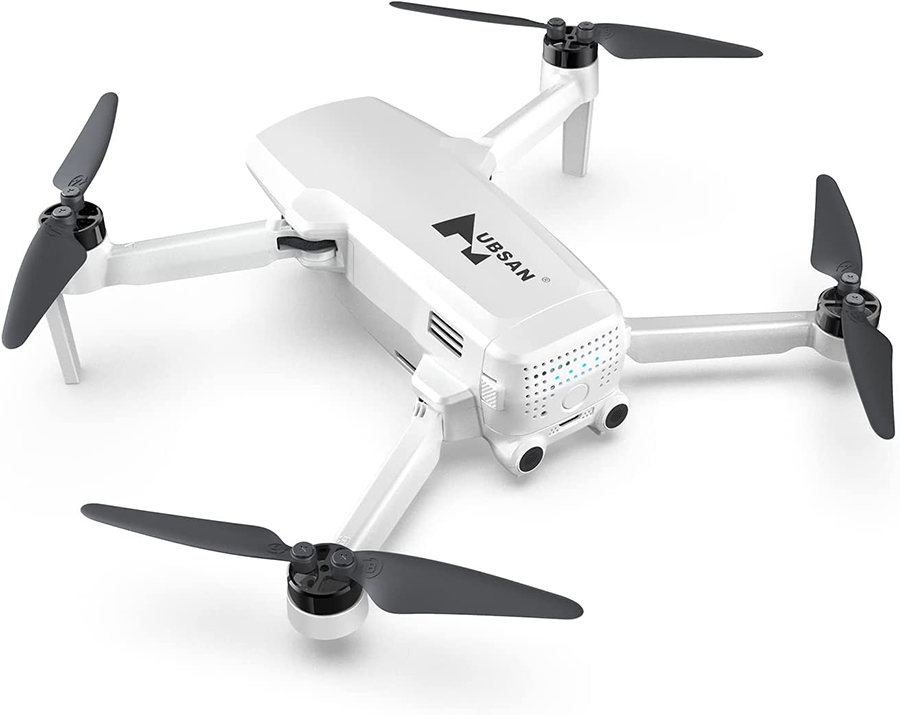
Hubsan is one of those brands that has been in the drone market for a long time and has mostly concentrated on the more budget-friendly market. The Zino Mini SE is Hubsan’s entry into the sub-250-gram category.
This mini drone costs only about $380, has an impressive flight time of 45 minutes, has a 1/2.6” CMOS sensor that can shoot 4K videos at 30 fps, and has GPS-aided hover stabilization. Even more surprising for a drone at this price range is that it has to Follow Me and subject tracking modes. The Zino Mini SE is also a good and inexpensive alternative if you’d rather not endure strict geofencing restrictions on your drone.
While not high-end by any means, the Zino Mini SE is an excellent sub-250-gram drone.
BetaFPV Cetus Pro
The BetaFPV Cetus Pro is a $200 FPV drone that can be safely flown indoors on account of its small size and its integrated propeller guards. This is an excellent drone if you’re curious about learning how to fly drones in FPV.
The Cetus Pro can be flown in attitude mode, position hold mode, or full manual. The drone is very quick, responsive, and tough to break. This is also the perfect drone to learn how to fly FPV in tight spaces.
For $200, the Cetus Pro comes with the drone, controller, and FPV goggles. The whole drone kit offers incredible value and is perhaps one of the most fun drones that you can fly, even if you’re a beginner.
Pilot Institute Budget FPV Build
For those who are up to doing some DIY work, we have prepared a video tutorial on building your own FPV drone from components. This video tutorial will take you through each step of the build. It’s also a great way to learn about the inner workings of drones, especially drones that are built for FPV flight. If high-level FPV drone racing is something that you think you might be interested in, then this is a fantastic place to start.
Putting together our budget FPV build will set you back about $230. You can also upgrade the drone to an all-digital model for about $340. These prices don’t include the cost of the controller and FPV goggles, so set aside some money for those as well.
Niche drones
On the other end of the use-case spectrum are these “niche” drones that may not be commercially known but serve very specific scenarios. As drones become more useful across a diverse set of industries, we can expect to see more of these highly specialized drones.
Wingtra One
The Wingtra One is a hybrid fixed-wing drone with VTOL capabilities that are specifically designed for large-scale mapping surveys. It can fly at speeds of up to 16 m/s for up to 59 minutes per flight. It is also equipped with a PPK GNSS receiver, reducing the need for Ground Control Points.
The Wingtra One has multiple payload options. You can choose between several RGB sensors of up to 42 MP, or equip the drone with an NDVI sensor for multispectral surveys.
At about $6000, the Wingtra One is clearly intended for enterprise users. Its value proposition is that it can cover large survey areas more quickly than other drones, whether fixed-wing or multirotor. This can result in savings in terms of operational costs, making the Wingtra One a worthwhile investment.
BRINC Lemur
The BRINC Lemur is an American-made FPV drone designed for response to high-risk situations such as those that involve hostage-taking or active shooters. The drone can fly for up to 31 minutes, has built-in propeller guards, and is aided with LiDAR-based computer vision. The idea is that the drone can be piloted into tight spaces to provide tactical intelligence or even to communicate with barricaded subjects.
To allow for entry into high-risk spaces, the drone has a front-facing set of tungsten carbide glass breakers. It also has a high-powered light and a general-use dropper for small payloads.
Paladin Knighthawk
The Paladin Knighthawk was envisioned as a Drone as a First Responder (DFR) – a drone that will fly automatically to the site of the emergency to provide advanced tactical information to the human first responders. The concept is quite futuristic and is one of the more innovative uses for drones.
The operations of the Knighthawk are quite complex when it comes to regulations, as the drone will be flying beyond the visual line of sight and will likely fly over people and moving vehicles.
Watts Innovations
The last drone that we will be featuring in this buying guide is the Prism Sky from Watts Innovations. This American-made drone was designed specifically for drone-based cargo delivery. At the bottom of the drone is a delivery winch to which payloads can be secured. The drone even supports high-end cameras like the Sony A7R IV.
Another huge benefit of Watts Innovations is that it has already been declared NDAA-compliant. This demonstrates that the drone is free from any data privacy or cybersecurity issues. This is an important qualifier if the drone is going to be used in any area or operations where national security is a critical consideration.
Again, this is the kind of drone that you will likely not see on the shelf of a store. However, public safety and welfare agencies should be able to find good uses for this drone, particularly in the delivery of provisions to hard-to-access areas.
Final thoughts
In 2022, the selection of drones has become as wide as ever. There is something out there for anyone – from beginners to drone photographers, FPV pilots, and emergency responders. It also speaks of how much the technology has evolved that there are now drones that have become hyper-specialized for very specific applications.
We hope that this guide has helped narrow down your choices for the next drone you’re getting. There is a multitude of things to consider when buying a drone, but our advice is to really think of your reason for getting a drone – this is the first thing that will help you decide which drone to buy.

